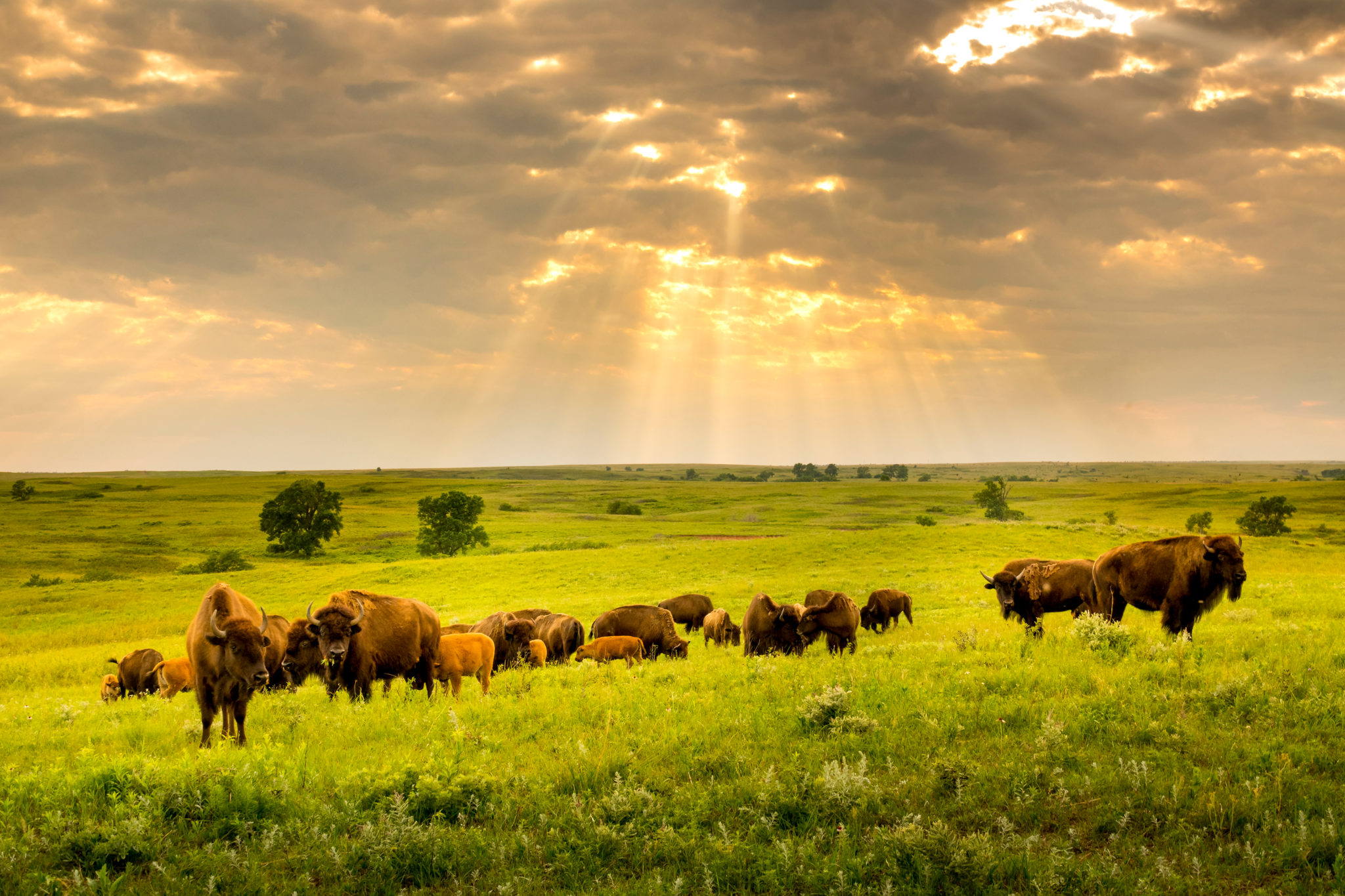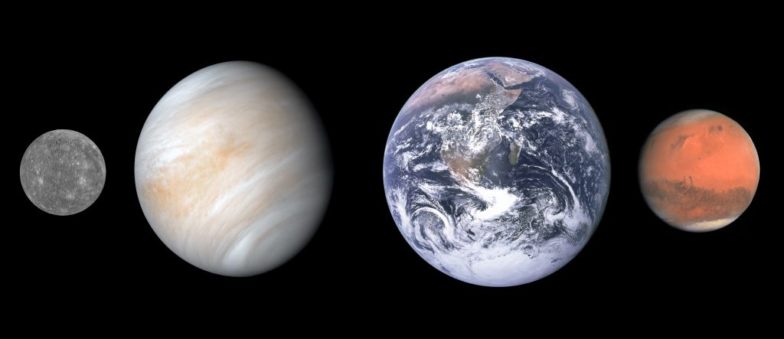Are Megaherbivores Designed to Limit Grassland Fires?
One need not be a scientist to discern that life, and especially human civilization, would be severely impacted if wildfires were more widespread and frequent. However, human civilization and the world’s ecosystems would be in serious trouble without enough wildfires. Scientists have learned how large land animals may play a role in maintaining a balance.
Wildfires and Nutrients
Forest and grass fires produce charcoal. Charcoal absorbs tannins and other growth-inhibiting chemicals. Charcoal breaks down into dust and ash that wind and rain runoff transport to regions adjoining burn areas. All this dust and ash conditions soils by enhancing their water retention.1
The accumulation of too much leaf and plant litter on soils can prevent seeds from germinating. The surplus releases chemical toxins at levels that will hinder bacterial nitrification of soils. Wildfires of sufficient intensity, extent, and frequency ensure that leaf and plant litter do not accumulate to harmful levels and that soils receive adequate infusions of charcoal.2
On the other hand, too little leaf and plant litter will release inadequate nutrients, especially nitrates, for plant growth.3 Thus, too many wildfires will decrease the release of these nutrients. Therefore, wildfires must be fine-tuned in their intensity, extent, and frequency to maximally benefit the world’s ecosystems and human civilization.
Recent Acceleration of Wildfires
In a report published in 2015, two ecologists used satellite imaging data to determine that for the years 2006, 2007, and 2008 the global burn area from vegetation fires averaged 3.6–3.8 million square kilometers per year (13% greater than the total land area of India).4 This average is well above the optimal burn rate. Other research studies show that the intensity, extent, and frequency of wild and prescribed fires are increasing and likely to increase further.5
Role of Megaherbivores in Wildfire Optimization
Megaherbivores refer to plant-eating animals with the largest body sizes—typically 1,000 kilograms (2,200 pounds) or more. Examples include elephants, giraffes, moose, buffalos, and camels. Field studies consistently show that herbivores limit wildfires by consuming fuels that would otherwise burn.6 Scientists had presumed that megaherbivores, owing to their large body sizes and extensive habitat ranges, would have a greater impact in reducing the extent and intensity of wildfires. However, until recently, this presumption had not been measured quantitatively.
A team of four ecologists, led by Yale University’s Allison Karp, used charcoal proxies (chemical stand-ins) to determine fire activity response to the late Quaternary (130,000–10,000 years ago) extinctions of many megaherbivore species.7 Karp’s team established that continents with the most severe grazer extinctions suffered the largest increases in fire activity in predominantly grass-covered regions. South America had an extinction rate of 83% and North America’s was 68%. The team showed that for South America the average adult body size of grazing mammals decreased from 950 kilograms to 60 kilograms and in North America from 1,060 kilograms to 140 kilograms. Furthermore, they demonstrated a strong inverse correlation between average adult body size of grazing mammals and the intensity, extent, and frequency of wild grass fires. In other words, the presence of megaherbivores helps to control grassland fires.
What Are We to Do?
In Genesis 1:28–30 God charged humans with the responsibility of managing Earth’s resources for their benefit and for the benefit of all Earth’s life. In Genesis 1:30, God exhorts humans to take especially good care of Earth’s green vegetation. Green vegetation is the base of the entire food chain. If Earth’s green vegetation suffers, all life on Earth suffers.
Based on this scriptural mandate and the latest scientific research on wildfires and herbivores, humans should do everything we can to enhance the health and population of wild megaherbivores. For example, by 2009 the caribou (reindeer) population in North America had plummeted to less than 10% of its level a century prior. However, due to hunting restrictions imposed in 2010, the North American wild caribou population has doubled.
Megaherbivores have always been favored by human hunters for their meat and the amount of meat per kill. One elk, for example, yields the meat output of five deer. Tourists’ fascination with megaherbivores, however, may be an economically attractive way to build up their numbers. Tourists love seeing moose, elephants, rhinos, buffalo, and elk in the wild and will spend considerable money and time for the experience. By replacing unrestricted hunting with ecotourism we may be able to restore wildfires close to their optimal levels, thereby fulfilling our creation mandate for the benefit of all life.
Endnotes
- Lacey A. Pyle et al., “Short-Term Changes in Physical and Chemical Properties of Soil Charcoal Support Enhanced Landscape Mobility,” Journal of Geophysical Research: Biogeosciences
,122, no. 11 (November 2017): 3098–3107, doi:10.1002/2017JG003938; A. U. Mallik, C. H. Gimingham, and A. A. Rahman, “Ecological Effects of Heather Burning: I. Water Infiltration, Moisture Retention, and Porosity of Surface Soil,” Journal of Ecology 72, no. 3 (November 1984): 767–776, doi:10.2307/2259530. - Orpheus M. Butler et al., “Long-Term Fire Regime Modifies Carbon and Nutrient Dynamics in Decomposing Eucalyptus pilularis Leaf Litter,” Frontiers in Forests and Global Change (March 17, 2020), doi:10.3389/ffgc.2020.00022; Peter D. Moore, “Fire Damage Soils Our Forests,” Nature 384, no. 6607 (November 28, 1996): 312–313, doi:10.1038/384312a0.
- Emma J. Sayer and Edmund V. J. Tanner, “Experimental Investigation of the Importance of Litterfall in Lowland Semi-Evergreen Tropical Forest Nutrient Cycling,” Journal of Ecology 98, no. 5 (September 2010): 1052–1062, doi:10.1111/j.1365-2745.2010.01680.x.
- Itziar Alonso-Canas and Emilio Chuvieco, “Global Burned Area Mapping from ENVISAT-MERIS and MODIS Active Fire Data,” Remote Sensing of Environment 163 (June 15, 2015): 140–152, doi:10.1016/j.rse.2015.03.011.
- Yongqiang Liu, John Stanturf, and Scott Goodrick, “Trends in Global Wildfire Potential in a Changing Climate,” Forest Ecology and Management 259, no. 4 (February 5, 2010): 685–697, doi:10.1016/j.foreco.2009.09.002; John T. Abatzoglou and A. Park Williams, “Impact of Anthropogenic Climate Change on Wildfire across Western US Forests,” Proceedings of the National Academy of Sciences USA 113, no. 42 (October 18, 2016): 11770–11775, doi:10.1073/pnas.1607171113.
- Sally Archibald and Gareth P. Hempson, “Competing Consumers: Contrasting the Patterns and Impacts of Fire and Mammalian Herbivory in Africa,” Philosophical Transactions of the Royal Society B 371, no. 1703 (September 19, 2016): id. 20150309, doi:10.1098/rstb.2015.0309; Matthew S. Waldram, William J. Bond, and William D. Stock, “Ecological Engineering by a Mega-Grazer: White Rhino Impacts on a South African Savanna,” Ecosystems 11 (February 2008): 101–112, doi:10.1007/s10021-007-9109-9.
- Allison T. Karp et al., “Global Response of Fire Activity to Late Quaternary Grazer Extinctions,” Science 374, no. 6571 (November 25, 2021): 1145–1148, doi:10.1126/science.abj1580.






